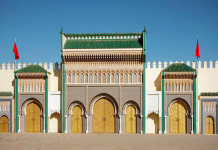With the year 2020, which saw many factors affecting various businesses, 2021 was a year of optimism, survival and revival in India tourism. The relaxation of certain travel restrictions and COVID SOPs and an intensive vaccination drive, together with the execution of the right measures and strict COVID SOP followed by the hospitality industry has boosted the confidence of the traveler’s community.
“Despite the fact that foreign travel restrictions have had an impact on enterprises, domestic travel is driving the recovery. Demand has surged in the leisure and homestay segments as travelers want to go a small distance to escape the congestion and immerse themselves in experiential stays. While hotels in metro areas across all categories are maintaining average rates and are predicted to return to normal by the end of 2022. The omicron crisis has significantly lowered previously improving business traveler attitude, resulting in a major drop in occupancy across the country in the final week of December,” said Nandivardhan Jain, CEO of Noesis, the India hotel investment advisory firm which presented the Indian Tourism and Hospitality performance report for 2021.
The impact of COVID-19 on the Indian hotel sector was such that India’s average occupancy was at 65 percent in 2019, but it plummeted to as low as a single digit in some months and locations throughout 2020 and 2021, greatly hurting the industry’s overall performance.
The Indian hospitality industry is set to expand at a pace of 10.35% between the years 2019 to 2028. It is projected that the Indian travel market will be worth USD 125 Million by the year 2027. In 2020, foreign tourist arrivals (FTAs) decreased by 75.5% YoY to 2.68 million and arrivals through e-Tourist Visa (Jan-Nov) decreased by 67.2% YoY to 0.84 million In India.
While the industry recovered significantly in 2021, the year was not without pandemic-related setbacks.
The appearance of a new COVID strain caused temporary hurdles in the sector’s recovery. Travelers and hotel industry players, on the other hand, continued to adapt to the changing scenario and find new methods to move forward. Driven by a strong recovery in demand, average room rates began to improve after the second wave and gradually approached pre-COVID levels.
The ARR was in the range of Rs 4,300-4,600, while the ARR in the fourth quarter was in the range of Rs 5,300-5,500, reaching almost 90% of the pre-COVID level. India’s top leisure and business destinations saw a surge in room rates during the third and fourth quarters of 2021. Wedding, workcations, and staycations fueled the growth for these destinations in destinations such as Udaipur and Goa while in Jaipur and Agra the focus was on improving the room rates.
While the year saw 110 properties that have opened in various parts of the country while there were 161 hotels signed in the same year. The report also portrays the future trends which shape would shape the hotel industry, trends such as leisure, staycation, local experience, Enhanced Digital Guest Experience, Virtual & Augmented Reality, Robot staff, sustainability and many more.













